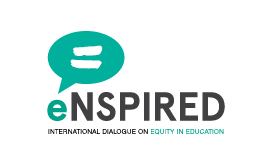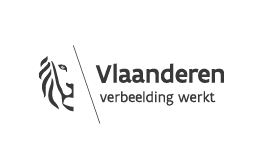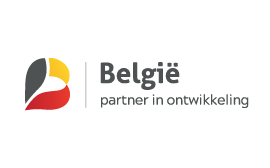-
STEP 1: Select your theme
In your internship country maybe they face similar education challenges to those in Belgium. Another context probably lends itself to another approach. Maybe even an approach that we in Belgium can be inspired by?
Verify what astonished, surprised, inspired you and made you think the last couple of weeks at your internship school! How would you be able to convert this into an interesting class or session?
TIP: you could also ask the teachers or other educational professionals in your host country what they find interesting as teaching practice! What are they proud of? Or what are they curious about with respect to education in Belgium?
-
STEP 2: Involve your teacher trainer
Ask your internship supervisor or another teacher trainer in Belgium for inspiration. Maybe a particular teacher trainer who works a lot around your selected theme in a class, is looking for very specific (visual) material? Or specifically cases of a particular practice that are written down and therefore easy to integrate into class.
-
STEP 3: Define your objectives
You already have selected a theme for your eduSHARE and determined how you are going to illustrate it. Now consider what you want to achieve with your eduSHARE! Do you want to make your fellow students aware about different approaches worldwide? Do you want to show that there are other ways that maybe we can learn from? Do you want to make your fellow students think about intercultural experiences? When determining the objectives of your eduSHARE, it may be interesting to take a look at the basic competences of teaching or intercultural competences.
As soon as you are clear about that, you can go on exploring, using the SMART model:
- Specific: What is the specific goal you want to achieve?
- Measurable: How do you verify that you have achieved the goal?
- Achievable: Can you really achieve the goal or is it too difficult?
- Relevant: Is your eduSHARE relevant for other students or teachers within your training programme?
- Timely: When is your deadline for achieving the goal?
Tip: try to work as focused as possible. So not: ‘I want to compare language teaching in South Africa with language teaching in Belgium’ but instead ‘Using a case study I want to illustrate how a school in Durban operates where children are given classes both in isiZulu and in English.’
-
STEP 4: Choose the format
What are you good at and what do you like to do? Do you like to vlog or are you inspired by Louis Theroux? Then you may consider making some video recordings or taking an interview with a teacher in your host country who inspires you or makes you think.
Always trying to take the perfect pictures? Why not a photographic series about interesting teaching practices?
A born entertainer? Maybe you should think about an educational game where other students may learn from!
-
STEP 5: Involve and align with professionals in the country
You could also ask the teachers or other educational professionals in your host country what they find interesting as teaching practice! What are they proud of? Or what are they curious about with respect to education in Belgium?
Integrate diverse visions for more neutrality.
As a foreigner you often stay an outsider, but how do you manage to ‘sneak in’? Photographing or filming can become a mutual process. Together looking for the most respectful or fun way to show something is a good plan. This way you will be creating a positive memory for both parties.
By involving your partner in this process it can show itself what they find important and how for each single problem a specific solution is searched for. Making images together strengthens the visual impact and the story behind them.
By taking into account the partner’s vision, the images you make will not be just your own interpretation anymore. So getting to know their view on the subject of your international practice is very important.
Chances are that in your partner country, there are various visions on the practice that you want to present, from the perspective of the school principal, students, pupils, and teachers … Try to establish these different perspectives, for example through an interview, a written text … Make sure to focus on the partner’s power, pride, and self-respect.
This way your international experience can afterwards be used in Belgium. From an expanded view, thanks to the different perspectives you offer.
-
STEP 6: Make an action plan
An interesting thing to do is to make a retro-planning. That is a schedule that counts back from the date your project must be ready. You divide the schedule into tasks and phases and this way you can see how much time you have for each phase. This way you will know whether you have enough time for each phase and you will always have a correct overview.
-
STEP 7: Bring an honest perspective
Make or select visual material taking into account people’s privacy and integrity.
- Talk to your supervisor or key person at your internship school or contact the (VVOB) supervisor within your internship country for assessment.
- First, ask permission to adults and to children before you photograph or film them.
- Tell them what the purpose is, and what you want to use the footage for.
- Always ask yourself if you would appreciate being displayed in such a way.
- If people are unable to object to being photographed or filmed, you should not do it.
- Every country has its own legislation. First, find out what the official legal guidelines are for taking photographs at your place of destination.
- Also, verify what this specifically means for photographing children
- If you have not got specific permission from the parents and the school personnel for photographing children, then you should make sure that the children are not photographed in a way that makes them easily recognisable.
Avoid stereotypical and negative images.
- Specific: Try not to show ‘THE children in Africa’ or ‘going to school in India’. Show unique, personal stories. Dynamic, close.
- Significant: The fact that children are learning enthusiastically is more important than the school building. The fact that there is enough water for the cattle so that they give milk, is more interesting than the water well.
- Hopeful: Negative situations are part of reality but sad images only evoke sympathy … Do not ignore the seriousness of the situation but focus on the power and dignity of people. Show bright spots and positive changes.
- Up-to-date: Make realistic, contemporary images: so also urban development, use of computers at school, television at home … apart from the traditional villages and habits.
- Connecting: Respect the differences but do not emphasize being different. People here recognize themselves more easily in common needs, requirements, feelings, wishes and rights.
Do the cliché check:
- Before you leave make a list of all the stereotypes you have about the country and the people you go to.
- Keep this list in mind when making photographs, videos … and do the opposite.
- Take an extra critical look when making your final image selection.
-
STEP 8: Frame!
Illustrating or photographing an interesting practice is one thing. Putting this into an interesting format that other students within the teacher-training programme can learn from, is a totally different thing. Check out what is the best way to frame your practice. Maybe by comparing it to the Belgian context? For example: do you want to show how your host country handles parent participation at school? Then it may be interesting to explain how it is done in Belgium and where the challenges are here.
Do you want to discuss classroom discipline for large groups? Maybe you could also interview a Belgian teacher to compare the two contexts. Or create a proposition game to make your fellow students think about the subject.
-
STEP 9: Pitch
Your eduSHARE is now ready! But you want to make sure that it will be used in your training programme. Provide a detailed description of what objectives are being tackled when using your eduSHARE.
Then write an exciting introduction why teacher trainers or fellow students should be using your eduSHARE.
-
STEP 10: Submit your eduSHARE
To do so, click here.




